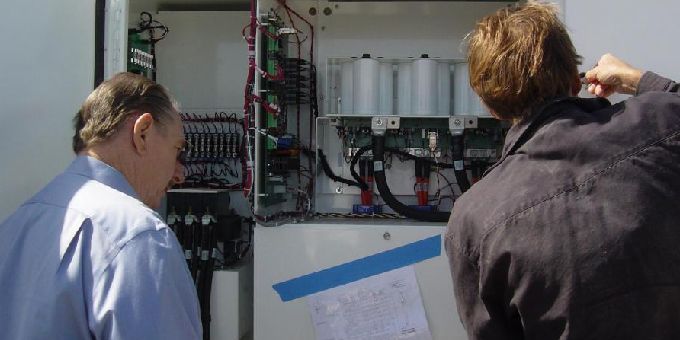Inverters, like all semiconductor-based equipment, are sensitive to overheating and, in general, operate best at cooler temperatures, while suffering power losses and damage at higher internal temperatures.
 How Does Heat Affect Solar Inverters?
How Does Heat Affect Solar Inverters?

Stuart Fox | CivicSolar, Inc
Inverters, like all semiconductor-based equipment, are sensitive to overheating and, in general, operate best at cooler temperatures, while suffering power losses and damage at higher internal temperatures.
Sun & Heat: Too Much of a Good Thing
It’s well understood that heat affects PV modules – they are tested and rated at 25 degrees Celsius and every degree above that causes power output to drop by up to .5% per degree, depending on the type of semiconductor used.
The temperature of the module is directly affecting voltage and the two critical things to consider are the highest voltage at the lowest local temperature and the lowest voltage at the highest possible local temperature.
At the lowest temperature, string voltage cannot exceed the maximum input voltage of the inverter (typically 1000Vdc) and at the highest temperature, string voltage needs to be above the minimum startup voltage of the inverter’s MPPT algorithm (usually around 200Vdc, but ranges widely).
There is plenty of information available on the PV modue and temperature subject, including another CivicSolar tech article.
So How Does Heat Affect Inverters?
What is not as well understood is that heat also affects solar inverters. The reasons are not the same – although the solar inverter has semiconductor parts in it which loose efficiency as they heat up, the semiconductors themselves are pretty sturdy and can tolerate high heat without breaking down (to a point).
Thermal Gain & Runaway Heat: Death to Components & Sub-Assemblies
As the inverter works to convert DC power to AC power, it generates heat. This heat is added to the ambient temperature of the inverter enclosure, and the inverter dissipates the heat through fans and / or heat sinks. The heat needs to stay below a certain level at which the materials in the inverter will start to degrade. Insulation will become brittle, solder can expand and crack and metal components in capacitors can fatigue.
In order to keep the heat low, the inverter will stop generating power or reduce the amount of power it generates by “derating” as it passes programmed temperature milestones. Figure 1, below, from SMA, shows how an SMA inverter handles temperature derating. At about 45 degrees C. it starts to ramp down power.
This ramp-down of power can be prevented with six key system design considerations:
- Install inverters in cool locations (shaded wall rather than the roof).
- Choose locations with sufficient air exchange. Ensure additional ventilation when necessary.
- Do not expose inverters to direct sunlight. For outdoor installations, use existing shadows or covers for inverters.
- Maintain the minimum clearance to neighboring inverters or other objects given in the installation guide.
- Increase the clearance when it is foreseeable that higher temperatures could occur at the installation location.
- Arrange multiple inverters so that they do not draw in the warm air of other inverters. Offset passively cooled inverters to allow the heat from the heat sinks to escape upward.
Most inverters will derate at around 45 – 50 Degrees C. In the inhabited places of Planet Earth, temperature will rarely climb above 45 degrees C (113 Degrees F). So, simply putting the inverter in a shaded area with good airflow will almost always result in an inverter that doesn’t derate.
The content & opinions in this article are the author’s and do not necessarily represent the views of AltEnergyMag
Comments (0)
This post does not have any comments. Be the first to leave a comment below.
Featured Product

